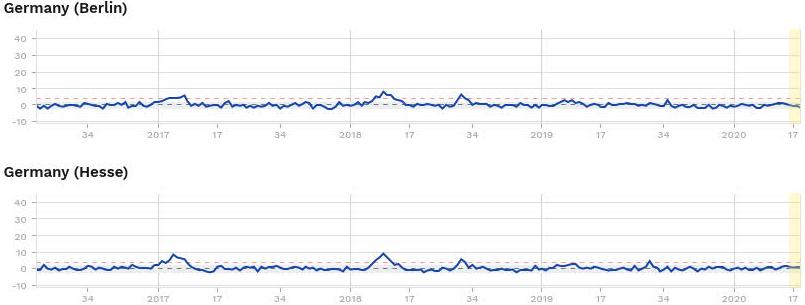"Everyone has the right to clear, accessible, timely and meaningful
information about the nature and extent of the threat to their
health".
(Esteban Beltrán, Director of Amnesty International's Spanish
Section, before the Economic and Social Reconstruction Commission of the
Spanish Parliament, European Union Group, 12 June 2020)
1.1. Definition of the problem
Following the declaration of the SARS-CoV-19 virus epidemic as a
pandemic by the World Health Organisation in spring 2020, nation-state
attempts to contain it have proliferated: from data collection through
testing and corresponding quarantines, to travel restrictions,
restrictions on movement in general, to more or less pronounced regional
and national so-called "lockdowns".
The significance of a pandemic is demonstrated above all by its
effects on the death rate of societies.
Accordingly, all these measures pursued the goal of reducing the
number of severe cases and deaths caused by the pandemic by interrupting
the chains of infection and stretching the curve of the number of
infected persons over time, also in order to avoid overloading the
health systems.
In Germany, a "scenarios paper" from the Federal Ministry of the
Interior became public in April 2020 (today available on the website of the Federal
Ministry of the Interior. Also available in Materials, downloaded on 16/05/2021),
in which, "in order to achieve the desired shock effect", it was and
still is demanded to move away "... from a case mortality rate that
sounds insignificant in percentage terms", to the clarification of the
"concrete effects of a contamination on human society":
"... Many seriously ill people are brought to hospital by their
relatives, but are turned away and die in agony at home, struggling to
breathe. (...)
If they (the children, R.W.) then infect their parents, and one of them
dies in agony at home and they feel they are to blame because, for
example, they forgot to wash their hands after playing, it is the most
terrible thing a child can ever experience."
Media outlets published their accounts of the pandemic situation and the
responses of the governments of various countries. This was done mainly
through detached figures of test results, i.e. infected persons,
hospital admissions, intensive care treatments, invasive ventilation
becoming necessary, and deaths related to the virus infection.
In both countries covered by this study, the focus was on absolute
figures without reference, i.e. without their context, in which they
must necessarily be seen and without which they lose their meaning.
They were limited to detailed discussions of the effectiveness and
significance of tests, the possible overloading of the health service,
the utilization of intensive care beds, the lack of ventilators, the
significance of incidence or R-values and the effectiveness of
protective masks outdoors and indoors.
The symptomatology of pneumonia and problems of mortuary practices in
selected locations were also highlighted regularly, as were the
long-term effects of the disease.
The significance of a pandemic, however, is measured primarily by its
impact on the deaths of societies, which - like births - have been
registered for a long time by the nation-state institutions charged with
this task and, for some years now, have been reported by some European
countries to a central registration office in Copenhagen, EuroMoMo,
https://www.euromomo.eu.
The first step presented here therefore attempts to trace the changes in
mortality during the so-called "first wave" in spring 2020 for two of
those countries, Spain and Germany, which experienced very different
courses of the pandemic.
A second step will be reserved for gaining information about the effects
of the measures taken in each case on the course of mortality - possibly
in contrast with the courses of events in some other countries.
Mortality in spring of 2020 in Spain and Germany compared to the general death rate in both countries
Tenagua, 12th June, 2020
1. Definition of the problem and summary of findings


1. Definition
of the problem and summary
1.1. Definition of the problem
1.2. Summary
4.
The usual "background" mortality patterns in Spain and Germany
compared to deaths with COVID-19
6. Personal follow-up comments in May 2021
Download
all pages in English as PDF

52 pages, 800 KB
I appreciate hints on errors and
suggestions for improvement:
r_a_wagner@gmx.de